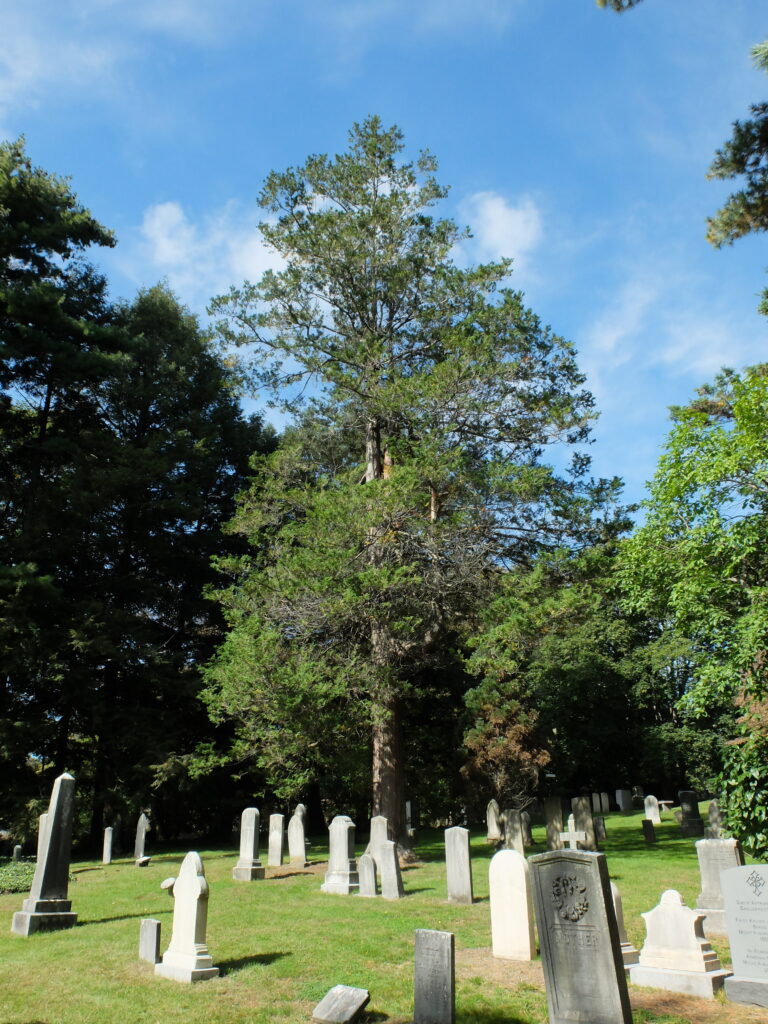Horticulture Highlight: False-cypress, Chamaecyparis pisifera

Birds small enough to nest in our young cypress
Donald Revell
Are physicians to us
They burst from the tree exactly
Where the mind ends and the eye sees…
Scientific identification of plants was dramatically changed and formalized by Carl Linnaeus (1707-1778) when he successfully introduced the concept of binomial classification: each thing would have just two-names in Latin. However, since that historic era in the 1750’s, periodic revisions have occurred, even until today, resulting in accepted botanical changes. One example involves the genus Cupressus, cypress which in Linnaeus’s time included some plants different than today. In the 1840’s,updated analysis created the new genus of Chamaecyparis, False-cypress, from within the latter. Another example of such a change from Linnaeus’ time led to the creation on the genus Tsuga, hemlock from within the then larger genus Pinus, pine.
The etymology of Chamaecyparis is derived from the Greek chamai meaning of the ground and kuparissos meaning cypress. The word cypress dates to Greek mythology with varying details. The consensus of tales includes a young mortal teen, Cyparissus, who was fond of the God Apollo. Cyparissus has a tame deer that he adores. One day with either an arrow or javelin sent into the air, he accidently kills his out-of-sight sleeping favored pet. Extreme unabated grief results with allaying action of Apollo transforming him into a cypress tree.
…Oh, speak not to me of the green cypress shade;
Frances Jane Crosby Van Alstyne
I would sleep where the bones of the Indian are laid,
And the deer will bound o’er me with step light and free,
And the carol of birds will my requiem be…
Thus, begins the cypress trees’ association with grief and/or sorrow. James Cothran and Erica Danylchak in their Grave Landscapes: The Nineteenth-Century Rural Cemetery Movement cite numerous examples beginning as early as the Roman poet Ovid (43 B. C. E. – C. E. 17) in his Metamorphoses. They also cite the English writer, gardener John Evelyn (1620-1706) who, “…noted other examples of burial grounds from antiquity were…planted about with Cypress…”. Additionally, recounted therein English poet, essayist Alexander Pope (1688-1744) had on his estate, “…nestled in a grove of mournful cypresses – the poet’s mother’s tomb…”.
Come away, come away, death,
Shakespeare
And in sad cypress let me be laid…
In Mount Auburn today you can find a small grove of False-cypress, Chamaecyparis pisifera near the grave of visual artist, Sarah Wyman Whitman (1843-1904) on a little cross path that leads from Indian Ridge Path to Fountain Avenue across from Lime Avenue. Other small groves of False-cypress are found at Fir Avenue, near the grave of Benjamin F. Roberts (1814-1887), editor, writer, African-American activist; at Lupine Path, opposite the grave of Dorothea Dix (1802-1887), reformer, advocate for mentally ill and on Yarrow Path, twenty paces southeast of the grave of the iconic Unitarian clergyman, William Ellery Channing (1780-1842).
Here once, through an alley Titanic,
Edgar Allan Poe
Of cypress, I roamed with my Soul-
Of Cypress, with Psyche, my Soul….
Chamaecyparis is a genus of six different species native to eastern and western United States and eastern Asia, classified within the CUPRESSACEAE or cypress family. Chamaecyparis pisifera, False-cypress, native to Japan, may grow 50-70-feet tall, having rather smooth, reddish-brown bark (sometimes grayish in older trees), which may peel off in thin strips. Its fully mature leaves are scale-like (not needle-like) 1/8 to1/4-inch long, occurring in alternating overlapping pairs of facial and lateral leaves. The cones are ¼-inch, globose, resembling in size a wrinkled small green pea.
Their tops are frayed, and they
Emanuel Carnevali
have not the energy to set them straight:
for cypresses are weary too.
In addition to aforementioned False-cypress, on a future visit to Mount Auburn also look for small groupings near the turn of upper Elm Avenue and on Celastrus Path as well as individual specimens throughout the grounds. A focused stop should take you to the northern half of Auburn Lake where there are two False-cypress planted in 1890.
…Then she looked up quite suddenly to the far bank
David St. John
Where the densely twined limbs of the cypress
Twisted violently toward the storm-struck sky…






Leave a Reply